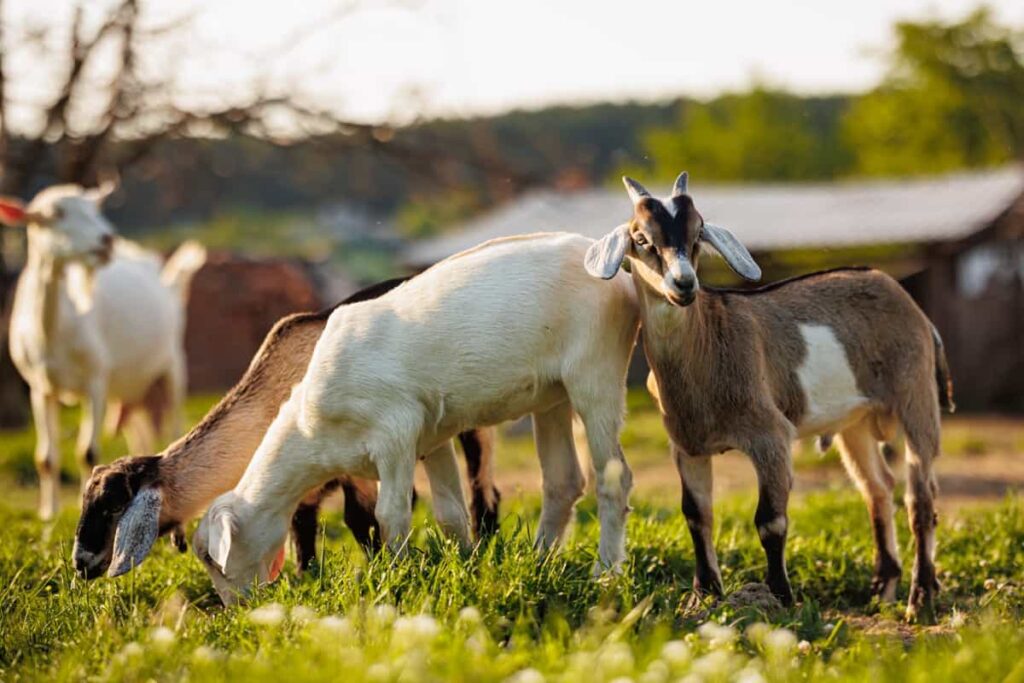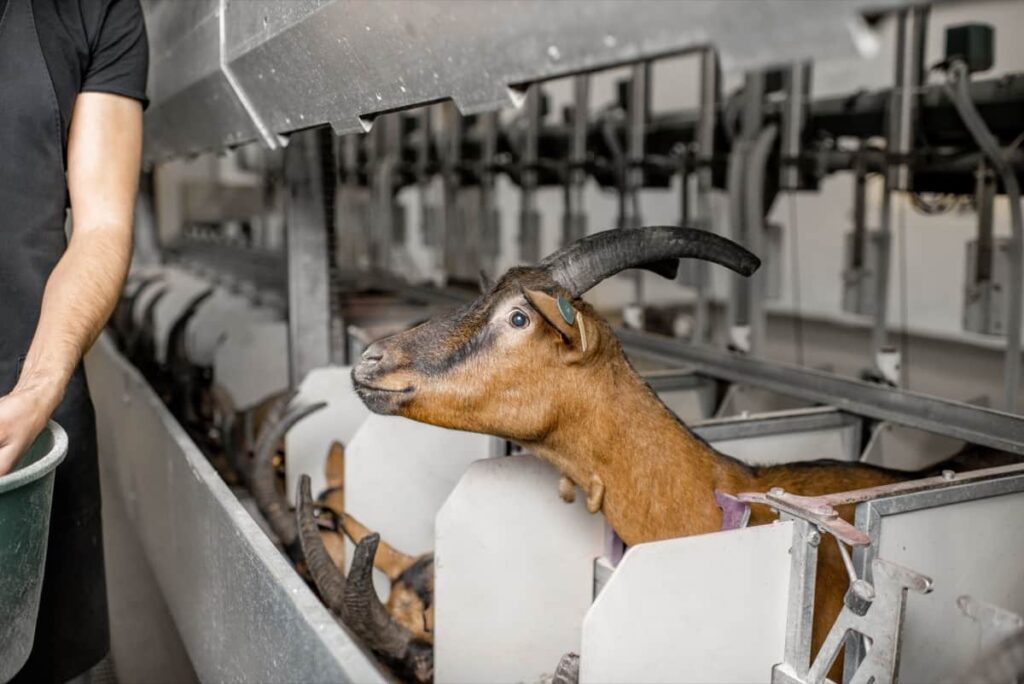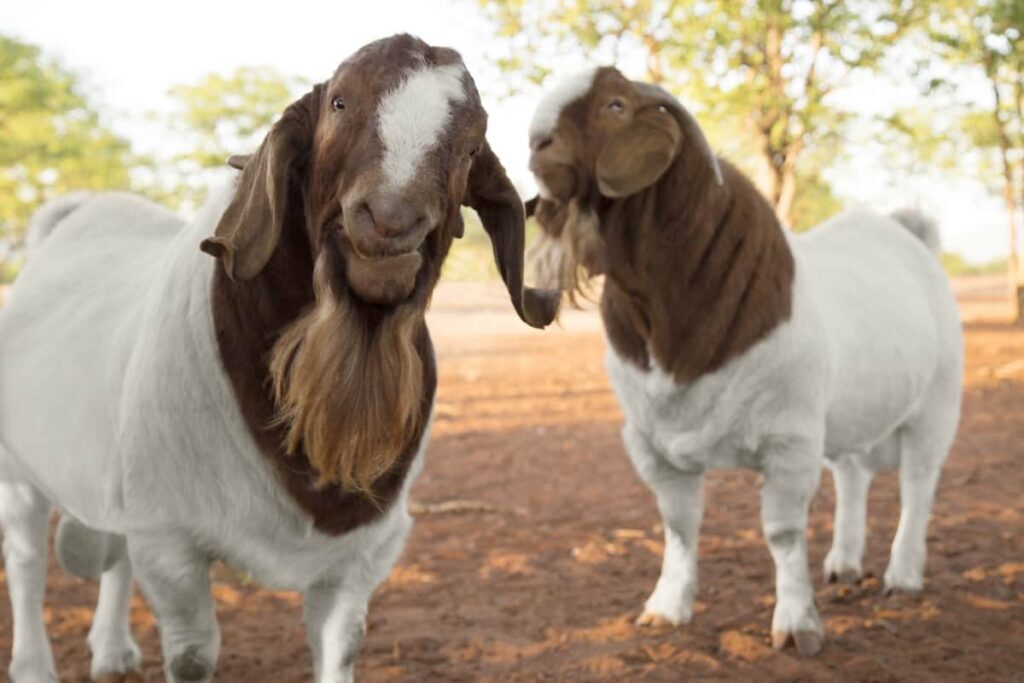Precision farming and automation have revolutionized the way goat farming is done in recent years. Precision farming involves using technology to manage the resources required for goat production, such as feed, water, and medication. This strategy minimizes waste, lessens the environmental impact of goat farming, and increases productivity.

Automation, on the other hand, involves using machinery and technology to perform various tasks automatically. In goat farming, this can include automated feeding and watering systems, temperature control systems, and even automated milking machines. Automation can save time and effort, boost productivity, and decrease labor costs. Both precision farming and automation require a significant investment in technology and infrastructure.
Technology in Goat Farming
Precision Farming in Goat Farming
- Precision Livestock Farming (PLF) uses technology to maximize livestock production. PLF improves goat herd control, efficiency, and animal welfare. RFID tags are necessary for goat-raising PLF. With these tags, farmers can watch goats’ location, health, and other vitals. This technology can identify animals, recover maternal pedigree, and track their health.
- PLF goat grazing uses walk-over-weigh platforms. These platforms log individual and herd weights to track animal growth and productivity. They can also separate goats by age when used with automatic drafting devices.
- Goat grazing also uses GPS and accelerometers. These technologies can track animal location, theft prevention, activity budget, behavior, and feed intake of grazing goats. They watch oestrus, kidding, and reproductive performance.
- Satellite images and UAVs can be used for biomass examination and pasture-based herd management. These technologies give farmers a bird’s-eye view of their fields, helping them make grazing and herd management choices.
- Goat farmers are also using virtual fencing to handle grazing. This device manages goats at pasture without fences by associating audio cues with an electric shock if the animal does not change course. This technology can keep goats safe and save farms money on fencing.
- PLF in goat grazing is still new, but it is expected to improve rangeland conservation, animal welfare, and labor optimization. Battery lifespan, transmission range, service coverage, storage space, and cost are usual constraints.
Benefits of Precision Farming in Goat Farming
- Improved herd management: Precision farming technologies, such as RFID tags and walk-over-weigh platforms, allow farmers to monitor individual goats and make more informed decisions about herd management.
- Increased efficiency: By using precision technologies to track animal health, growth rates, and other essential metrics, farmers can optimize their operations and increase productivity.
- Improved animal welfare: Precision farming technologies can help farmers monitor the health and well-being of their goats, reducing the risk of disease and other health issues.
- Better grazing management: Remote sensing technologies, such as satellite images and UAVs, can provide farmers with real-time information about pasture availability, allowing them to make more informed decisions about grazing patterns and herd management.
- Cost savings: Virtual fencing and other precision farming technologies can help farmers save on traditional fencing and other infrastructure costs.
Automation in Goat Farming
Automation in goat farming is becoming more popular, with automatic devices in milking parlors being a prime example. These automated systems can reduce milking time, save on labor, and simplify milking routines. With the integration of animal identification, farmers can register, store, and analyze all animal data from milking equipment and other devices.
Various types of automation equipment are available for dairy sheep and goat farms, including automatic vacuum shut-off, milk recording, electronic identification, flock management software, and sort gates. These systems can help farmers reduce overmilking, improve animal health, save time on daily tasks, and gather the necessary information to make informed decisions.
In case you missed it:Sustainable Goat Farming Practices: Eco-friendly Goat Raising Methods

Benefits of Automation in Goat Farming
- Saves time and labor: Automated systems can reduce the time and labor needed for milking, feeding, and sorting animals.
- Increases accuracy: Automation allows for more accurate data collection and analysis, which can help farmers make better-informed decisions.
- Improves animal health: Automated systems can detect and address health issues earlier, improving overall animal health.
- Enhances milk quality: Automated milking systems can reduce the risk of contamination and improve milk quality.
- Improves farm profitability: Automation can help farmers reduce costs and increase milk production, leading to improved profitability.
- Increases sustainability: Automated systems can help reduce waste and improve resource efficiency, leading to a more sustainable farm operation.
- Enhances animal welfare: Automated systems can provide a more stress-free environment for animals, leading to improved animal welfare.
Best Practices for Adopting Technology in Goat Farming
- Keep changes to a minimum and evaluate data results with your veterinarian or advisor.
- Identify groups of animals that need to be managed differently and look for technologies that can accommodate those differences.
- Consider all functionalities of a technology before investing in it.
- Combine all data to improve decision-making.
- Early identification of potential management challenges helps maximize efficiency and productivity, reducing potential milk production losses and improving animal health.
- Integrate electronic ID with other tools like sorting gates or automatic recording systems.
- Monitor all data to benchmark animals historically or against other herds.
- Be aware of technologies that may not provide decision-making information but can improve specific situations, such as milking systems adapted for goats or feeder pushers.
Different Types of Sensors Used in Dairy Goat Farming
The main ones include electronic identification devices, automatic milk meters, milk electrical conductivity meters, and automatic feeders. Electronic identification devices are useful for automatic milk recording, kidding recording, health problems, traceability, sorting gates, and automatic weighing.
Automatic milk meters range from simple milk meters to systems with electronic ID, milk yield measurement, electrical conductivity, milking time, and flow rate. Milk electrical conductivity meters can detect mastitis, but factors such as parity, lactation stage, individual variation of EC, and farm and analyzed milk section are related to EC.
No sensors are available yet to monitor reproduction on goat farms. Automatic feeders can increase feed intake, control feed/concentrates, recognize individual needs, adjust the daily ratio for each goat, and reduce feed waste. They are also available for kids and can save time, reduce labor costs, and improve health and hygiene.
In case you missed it: Best Meat and Milk Goat Breeds in India: Considering these Goats in Commercial Goat Farming Business

Conclusion
Precision farming and automation can help the goat farming industry in a big way by making it more efficient, lowering labor costs, improving animal health and welfare, and ultimately making it more profitable. Technology is likely to play an ever-increasing role in the future of goat husbandry as it continues to develop.
- Types of Grass Growing for Goat Farm
- How to Train Goats for Milking: A Beginners Guide
- Goat Milking Practices and Equipment: A Beginner’s Guide
- Goat Farming for Fiber: Producing Mohair and Cashmere
- Maximizing Goat Milk Production: Tips for Dairy Goat Farmers
- Goat Farming as a Family Business: Strategies for Success
- Profitable Kenya Goat Breeds for Commercial Dairy and Meat Business
- Unlock the Secrets of Oberhasli Goat: Discover Raising and Management Practices
- Ultimate Guide to Myotonic Goats: Explore Profile to Raising
=
Hi Team,
I’m interested in goat farming and wanted to know few things before entering it.
Appreciate your response to discuss further.
Thank you.!
Syed Riyaz